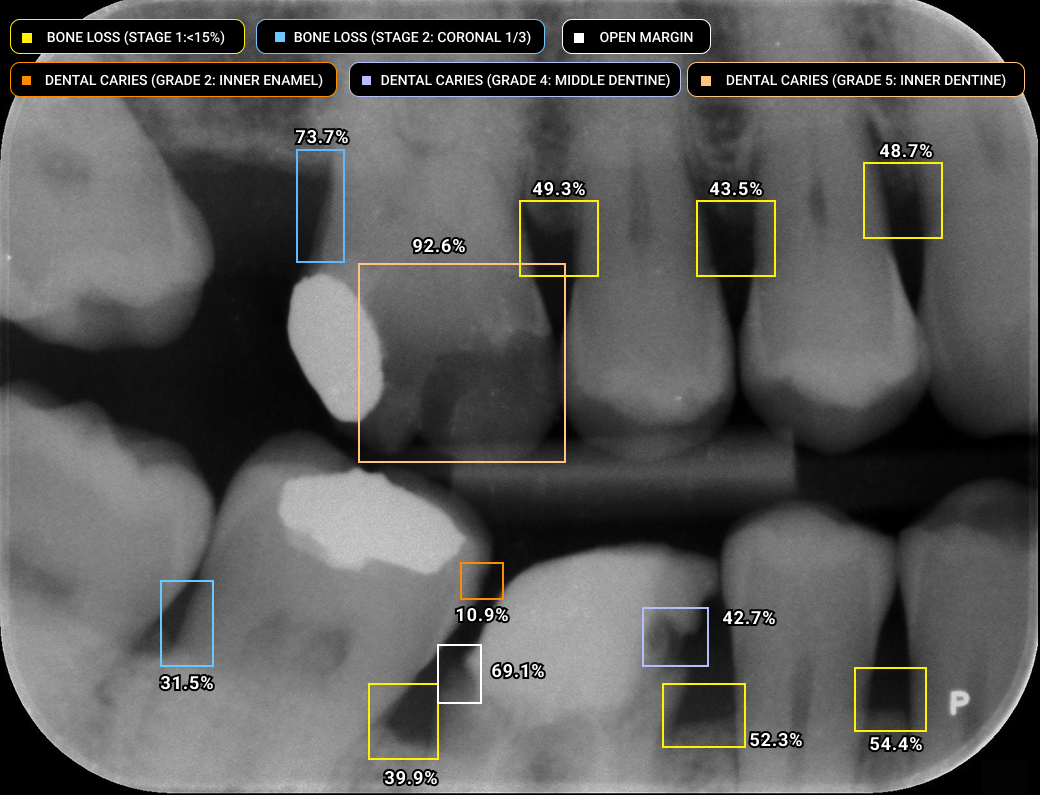AI-assisted Dental Disease Detection with Radiography
We aim to develop trustworthy and reliable AI tools to assist dentists in abnormalities in dental radiographs. By supporting clinical decision-making with trustworthy AI models, our ultimate goal is to:
- Enhance diagnostic accuracy.
- Detect early diseases.
- Reduce unnecessary economic and human costs spent on dental X-ray diagnosis.
Background
The World Health Organization (WHO) estimated that nearly 3.5 billion people worldwide, which is about 50% of the global population, suffer from some form of oral disease1. In the UK, NHS spends over £3.6 billion annually to provide dental care2. Dental radiography is an essential tool for diagnosing dental diseases such as tooth decay and gum disease. 46 million dental X-rays are taken in the UK each year3. Despite its importance, interpreting radiographs can be a complex and time-consuming task, prone to human errors. Subtle abnormalities, varying viewing conditions, clinical expertise level and fatigue can all contribute to inaccurate diagnoses.
There is an urgent need for automated tools to assist dentists in identifying abnormalities in dental X-rays, with the goal of improving diagnostic accuracy while minimizing unnecessary clinical and economic burdens. This project, funded by the National Institute for Health and Care Research (NIHR), aims to address these challenges by developing reliable AI tools designed to enhance clinical decision-making and improve patient outcomes.
Our model
We are developing a software as a medical device, which aims to:
- Facilitate the collection and annotation of dental radiographs.
- Assist dentists in identifying diseases on dental X-rays with advanced AI models.
By leveraging advanced AI techniques, our AI tool can also enhance patient engagement. Visual cues, such as colour-coded diseases on grayscale images, can make complex medical information more accessible and understandable. This can lead to improved communication between clinicians and patients, building trust and acceptance of AI-assisted care.

Our goal is to establish a positive feedback loop: improved diagnostic accuracy supports better annotations, which in turn enhance AI model performance—ultimately advancing both clinical decision-making and AI development.
Our AI model is capable of detecting in total 18 categories of dental conditions, including pathologies and non-pathologies.
If you are interested in our project and would like to know more about how our AI model works or contribute your images, please contact us via email.